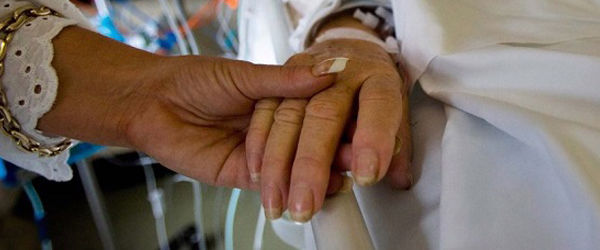As I write, our new Pope Francis has just celebrated his inaugural Mass as the spiritual head of the world’s 1.2 billion Catholics. The ceremony marks the close of what has been a historic and unforgettable 40 days of Lent for Catholics.
The unexpected drama started two days before Ash Wednesday, when Pope Benedict XVI announced his resignation — the first time a Pope has stepped down in nearly 600 years. Now as we approach the start of Holy Week, we welcome a new Pope who is the first non-European in nearly 1,300 years — and the first Pope from the Americas.
The election of Cardinal Jorge Mario Bergoglio, S.J., from Argentina is a sign of changing times. The Catholic Church’s center of gravity has long been undergoing a global shift. The Church’s growth and creative energy no longer come from Western Europe — but from Africa, Asia and most all, from Latin America.
Blessed Pope John Paul II and Pope Benedict XVI called Latin America — where 40 percent of the world’s Catholics now live — the “Continent of Hope.” Pope Francis is the face of the Church’s new hope.
The first pope from the New World, his election reflects the Church’s vitality in these countries. It also points to the rising Latino profile of the Church in the United States. More than one-third of U.S. Catholics are Latino, the result of the steady northern migrations of men and women from the “Continent of Hope.”
Immigration is changing the face of our nation and our Church forever. Hispanics now make up 16 percent of our population and that percentage will only grow. Nearly one-quarter of all American children under age 17 are Hispanic.
This same pattern is true in the Church. Latinos make up more than half of all Catholics under the age of 25. Now these young Latinos and their parents have a pope whose native language is Spanish. A pope who understands their traditions and cultural realities. Millions of immigrants can look now to a pope who knows their experience of coming to a new country to make a new life.
In our current debates in the U.S. over comprehensive immigration reform, Pope Francis should be a powerful symbol.
Our new pope is an immigrant’s son. This is also something new for a pope in modern times. His father was a railroad worker who came to Argentina from Italy seeking a better life. What a great story! The son of a humble immigrant grows up to become the spiritual leader of more than a billion Catholics in every continent and nation!
Every new pope takes a name that is meant to signal his vision for the Church. With his bold choice of St. Francis of Assisi, our new pope has identified himself with Christianity’s most well-known saint. For believers and non-believers alike, St. Francis represents the true spirit of the Gospel — with his simple lifestyle, his humble service to the poor, his love for creation, and his attitude of nonviolence and forgiveness.
“How I would love a Church that is poor and for the poor,” Pope Francis has said in his first days.
From Francis, Catholics can expect to hear a new call to our Christian duty to serve those who are most in need and to seek justice and dignity for the human person.
Material poverty is growing in our society. There is a wide divide between those who do not have enough to live and those who have far more than they need. But “spiritual poverty” is also growing in our society. That is the poverty of indifference to religion — of living as if God does not exist or as if life has no higher meaning. So for Americans, the name Francis should have a further association.
Franciscan immigrants and missionary priests were among the first to bring Christianity to Mexico and Latin America and then to this country, especially to California. The great Apostle of California, Blessed Junípero Serra, was a Franciscan.
And of course, Los Angeles was first called El Pueblo de Nuestra Senora de Los Angeles — named after the chapel that St. Francis used as his headquarters. This new papacy should awaken our memory of this country’s deep Christian roots and its connections to the Church’s missions in Mexico and Latin America.
Pope Francis understands that the Americas need a new evangelization — a new encounter with the figure of Jesus Christ and his Gospel of love and salvation. He helped draft one of the modern Church’s key strategic documents — the Latin American bishops’ 2007 “Aparecida” report that called for a new “continental mission.”
As we look beyond the historical drama of this Lent to celebrate our first Easter with our new pope, let us pray for one another and for our new pope. Let us pledge ourselves to the “continental mission” — to be being disciples and missionaries of the new evangelization.
And let us ask the intercession of the Mother of the Americas, Our Lady of Guadalupe, and St. Francis — that we may make this new moment of grace in our Church a time for spiritual renewal in our own lives, in our Church and in our society.

